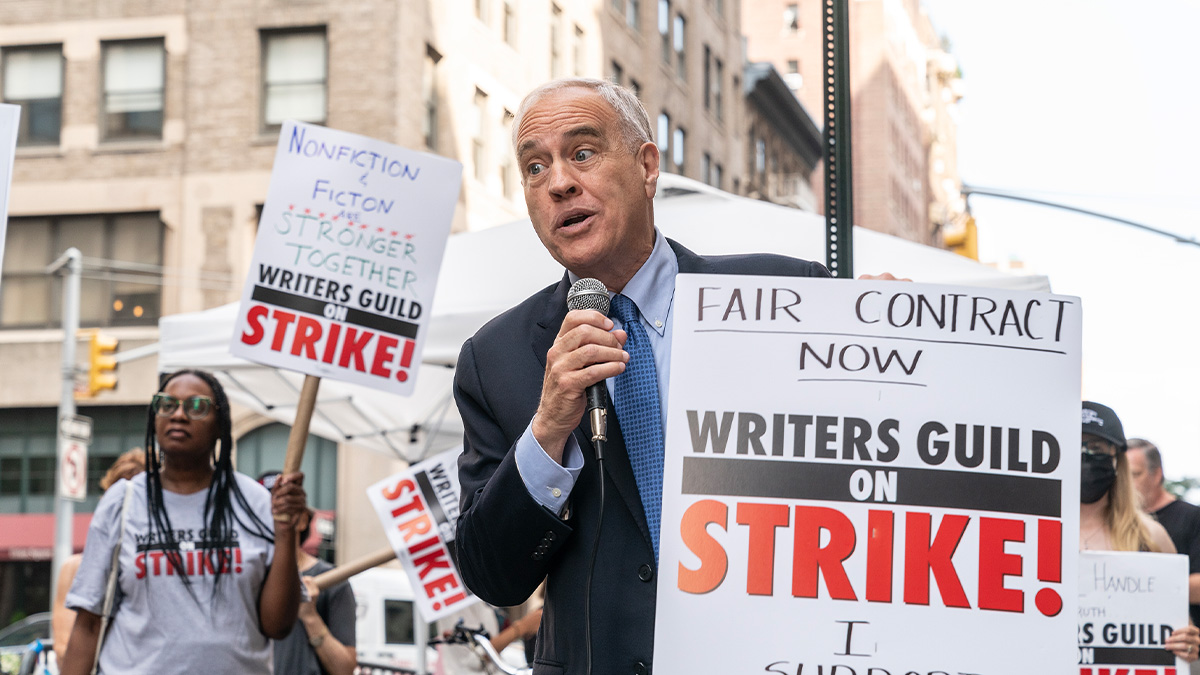Despite a promising meeting between the Writers Guild of America and the Alliance of Motion Picture and Television Producers last Friday, it looks like the writers‘ strike is nowhere near a resolution. After 106 days, the two parties have once again come to an impasse as the AMPTP refuses to meet the union’s demands.
The WGA officially turned down the AMPTP’s initial offer, which failed to address several key points on the union’s agenda (via Variety). The guild has, for instance, been steadfast in its desire to set minimum staff sizes for television writers — though it has lowered its initial minimum demand by one writer. The AMPTP’s response includes an offer to grant showrunners the authority to hire up to a certain minimum number of writers, which is not a guarantee that writers’ rooms will be properly staffed.
The AMPTP also did not allow any streaming residuals to the guild, nor did it offer to meet the WGA’s demand for higher minimum tiers for TV writer-producers. As for the WGA’s demand that the AMPTP assure the union that its health plan will maintain funding despite the strike, and that union members will retain their health coverage, the AMPTP also refuses to budge.
In fact, the AMPTP’s terms fall far below what the WGA actually wants. The issue of viewership on streaming sites — and the residuals associated with streaming — was countered by the AMPTP with an underwhelming offer. While the WGA wanted transparency in viewership data alongside proper, scaled compensation-per-view, the AMPTP countered by proposing that they would share the number of hours viewed for any program, but would not tie this to residuals.
That essentially makes the offer meaningless. Not only do several streaming services already publicize the number of hours viewed per program, the lack of streaming residuals is a major issue for the future integrity of the industry. The current residual model will not last long because it is currently tied to reruns on television. Since cable-cutting is becoming so common, residuals are no longer a viable option for creatives to support themselves in the potentially months-long gap between jobs. Many notable actors and actresses have even highlighted this, posting images of one-cent and even zero-cent residual checks from studios. The industry cannot survive if its workers are being underpaid on that level.
Unfortunately, this outcome demonstrates the Alliance of Motion Picture and Television Producer’s continued streak of ornery behavior. From bungled comments to labor violations, the trade association has come out of this strike looking worse for wear: the optics of this situation have not been great for Alliance.
The counterproposal offered to the WGA is frankly, ridiculous. The AMPTP’s concessions — if they can truly be called such — would not even allow the WGA to stay striking in solidarity with its sister union, SAG-AFTRA. That’s despite the fact that, without actors to film, it would be quite pointless for most writers to even return to work.
As it stands, the writers strike must continue until the AMPTP offers serious amendments to the WGA’s contract. Though the writers are the underdog in this situation, millions have shown support for the protestors, offering donations and volunteering their time. Though the strike will stretch on, the WGA and SAG continue to persevere.
